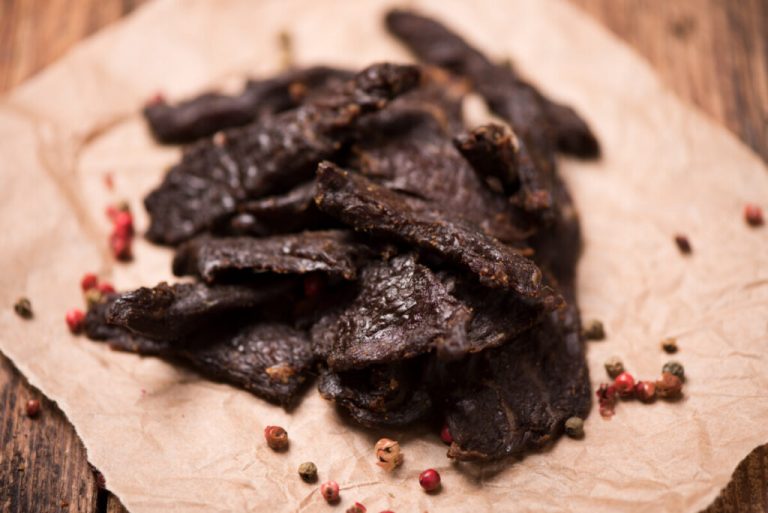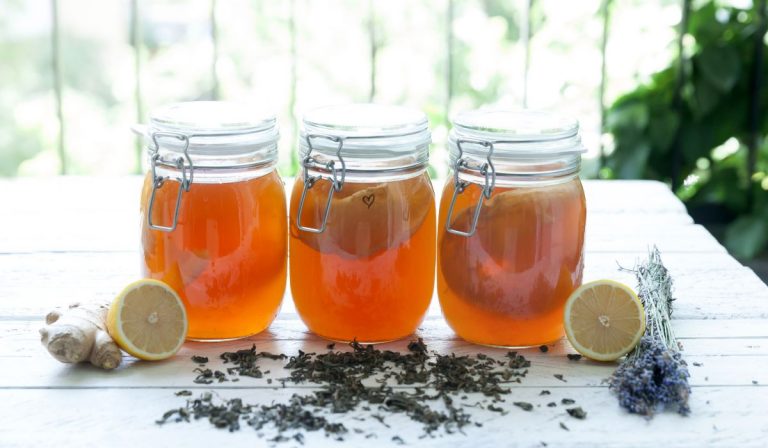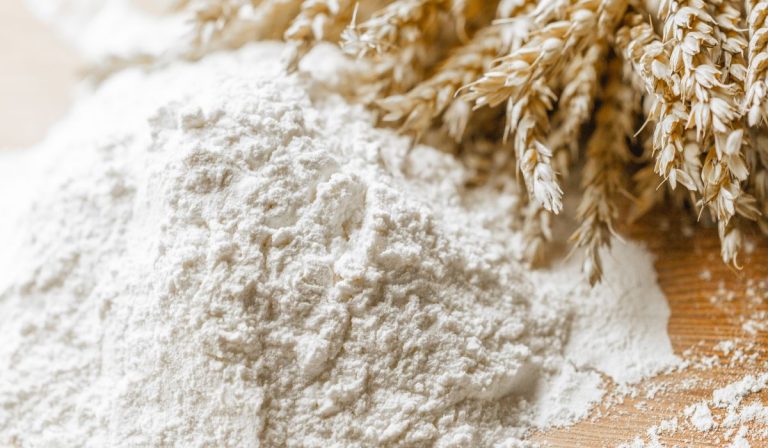Does Jasmine Rice Raise Blood Sugar? (Nutrition, Serving Size)

With more than 120,000 varieties in the world, it’s no secret rice makes a pantry staple across the globe. It’s also no secret that rice is one of the richest carbohydrate foods out there. This may lead individuals with diabetes to be a bit wary about consuming it, as it may pose a threat to causing a spike in blood sugar levels. Does jasmine rice raise my blood sugar?
Due to a high glycemic index of 109 and high carbohydrate content, jasmine rice will likely raise your blood sugar if eaten in large quantities or if eaten alone. However, by limiting your portion size to 1/3 cup, and consuming non-starchy vegetables and lean proteins with your rice, you can avoid a spike in your blood glucose.
While some varieties of rice are considered better options for diabetics, there’s no reason to avoid rice of any variety completely.
Like all types of rice, jasmine rice has a relatively high glycemic index. Foods with a high glycemic index cause rapid spikes in blood sugar levels. This is especially dangerous for those with diabetes, as it can cause further health complications.
However, there are ways to safely consume jasmine rice that creates a lower, gentler change in blood sugar levels.
In this article, you will learn it’s not solely the type of rice you eat that matters, but more importantly, the quantity and the method in which you choose to consume it!

What is jasmine rice?
Jasmine rice is of a long-grain variety called Oryza sativa. Also known as the “fragrant” or “aromatic” rice, its notable fragrance is reminiscent of pandan or popcorn.
When cooked, it has a moist and soft texture and a slightly sweet flavor. Although not the stickiest variety of rice, jasmine rice is three times stickier than American long-grain rice.
Jasmine rice is primarily found in its white, brown, and red varieties. Red rice differs from brown rice in that only the husk has been removed, while brown rice has both the husk and some layers of bran removed.
Health benefits of jasmine rice
1. Good Source of Iron
A single serving of jasmine rice contains 11% of the daily recommended value of iron. Iron is an essential nutrient involved in several metabolic processes in the body, including brain function, hemoglobin formation, and red blood cell production.
A lack of iron in the diet may lead to iron deficiency anemia, a relatively common condition characterized by symptoms that include fatigue, dizziness, and brittle nails.
Consuming a diet including a variety of iron-rich foods, like jasmine rice, can help boost your iron intake and prevent iron-deficiency related anemia.
2. High in Antioxidants
Jasmine rice is packed with antioxidants, which are compounds that help protect the body from oxidative stress by fighting free radicals and minimizing cell damage.

A serving of jasmine rice is especially high in manganese, an essential trace mineral that behaves as an antioxidant that is required for the body to function properly. Some varieties of jasmine rice, like red, purple, and black rice, may have higher antioxidant contents than the white and brown varieties.
Research indicates red jasmine rice may help decrease cancer cell proliferation due to its beneficial antioxidant-behaving compounds, including phenolics, oryzanol, and tocopherol.
3. Heart Health
Brown jasmine rice is considered a whole grain. Several studies support that consuming whole grains on a regular basis is an important part of a heart-healthy diet. Eating at least three servings of whole grains per day is linked to a lower risk of heart disease and stroke, as well as enhances overall heart health.
Moreso, brown jasmine rice has a richer fiber content, which has been found to help decrease cholesterol and blood pressure levels, two major risk factors for heart disease.
4. Rich Source of Fiber
As mentioned above, brown jasmine rice is a rich source of fiber. Along with heart health benefits, fiber is a nutrient that is known for its wealth of other health benefits. Fiber is famously known to contribute to digestive health. A fiber-rich diet leads to easier digestion, more efficient absorption of nutrients, and regular bowel movements.
Fiber also plays a crucial role in managing blood sugar levels, which is especially important for individuals with diabetes.
Lastly, fiber keeps a person feeling fuller longer which helps prevent overeating, making it a key nutrient for healthy weight management.
Jasmine Rice Nutrition facts
Although the jasmine rice nutrition label can vary a bit depending on the specific variety, it is typically high in carbohydrates, along with several micronutrients.

Every 1 cup (about 158 grams) of cooked white jasmine rice has the following nutrition values:
Calories: 205
Carbohydrates: 44.5 grams
Protein: 4 grams
Fat: 0.5 grams
Fiber: 0.5 grams
Sodium: 0.0 grams
Vitamins and Minerals including:
Manganese
Folate
Selenium
Niacin
Iron
Phosphorus
Magnesium
Zinc
Copper
Compared to the white jasmine rice variety, the nutrition profile of brown jasmine rice includes lower calories and higher amounts of fiber, calcium, and iron.
What is one serving of jasmine rice?
A standard serving size of Jasmine rice is considered to be one cup; however, it is recommended individuals with diabetes should eat less than half of that in combination with other foods. Even when jasmine rice is eaten in combination with other foods including non-starchy vegetables and lean proteins, individuals with diabetes should monitor their glucose levels closely.

How much jasmine rice can I eat with my diabetes?
When preparing jasmine rice, a person with diabetes should be aware of its high carbohydrate content, high glycemic index, and effect on blood glucose levels.
It is important to take into consideration the recommended serving size of jasmine rice, as consuming more than what is recommended can have potential side effects, including spiking blood sugar levels and an increased risk of obesity.
One cup of jasmine rice has close to 45 g carbohydrate. If you are following a carb counting meal plan, this is considered three carb choices, where one carb choice equals 15 g of carbohydrate.
For many meal plans, 45 g of carbohydrate is the suggested amount for the total carbohydrate of the meal.
Preventing Blood Sugar Spikes
All varieties of jasmine rice (white, brown, and red) can cause a spike in blood sugar levels which can lead to complications in individuals with diabetes. This is mainly due to its high glycemic index, high glycemic load, and rich carbohydrate content.
According to The Diabetes Council, jasmine rice has a glycemic index of 109. Foods with a glycemic index of 55 or lower are preferred options when following a diabetic-friendly diet due to their slower absorption rates resulting in smaller spikes in blood sugar levels after consumption.
However, consuming smaller portions of jasmine rice, especially in combination with fiber-rich produce and lean protein will help prevent severe spikes in glucose levels.
How to prepare jasmine rice for people with diabetes
Before cooking with jasmine rice, it is important to thoroughly rinse it. Rice is grown in
Place your rice in a bowl and fill it with water. Swish the rice around with your hand and then drain. Repeat this 3 to 4 times before cooking and consuming jasmine rice.
To cook jasmine rice, you will need 1 cup of uncooked jasmine rice and 1 ¼ cups of water.
Note: White jasmine rice is much softer than most white rice varieties, which means less water is needed for the rice to cook to a soft and fluffy consistency, rather than forming a gummy texture.
First, put the water and rice in a saucepan and bring to a simmer on high heat as quickly as possible.
Once your rice and water reach a simmer, cover the saucepan and turn the heat down to low.
Let the rice cook for about 12 minutes without lifting the lid or stirring.
Then let the rice stand for 10 minutes to finish cooking.
Lastly, fluff your rice using a spatula or rice paddle to stop the grains from breaking.
Cooking ideas for jasmine rice:
- Season with turmeric, cumin, cinnamon, and bay leaf to make a simple Yellow Jasmine Rice dish
- Try a simple jasmine rice Pad Thai recipe and add shrimp or chicken for lean protein
- Serve jasmine rice Golden Thai Curry-style packed with vegetables
- Serve jasmine rice with meat, veggies, and a savory broth to make Chinese Rice Soup
- Cook with coconut milk, sugar, salt, and cilantro to make a simple Coconut Rice dish
- Add to a leafy green salad for texture
- Add to Greek yogurt for DIY “rice pudding”
Cooking with jasmine rice alternative:
If you are wary of the high glycemic index of jasmine rice, this is a method you can use to minimize its effects on your blood sugar levels.
Use a half cup of jasmine rice and combine it with a half cup of lentils. By making this simple switch, your blood glucose has the potential to drop between 20% to 30%. Not only will this swap help reduce the negative effects a full serving of jasmine rice may have on your blood sugar levels, but it will also give you more nutrition benefits.
With the addition of lentils, you will gain vital nutrients, vitamins, minerals, and fiber that is not in a serving of jasmine rice alone.

Jasmine rice origins
The ancestors of jasmine rice were developed nearly 100 years ago by Isan farmers in the eastern region of Thailand. After World War II and nearly two decades of testing, the government rice board officially released Jasmine rice in the 1950s.
Today, jasmine rice continues to be a staple in the Thai diet and is one of the country’s biggest exports. Typically, Thailand exports 4 to 5 million tons of rice per year, making Jasmine rice more than 25% of all rice exports.
Although still primarily grown in Thailand, jasmine rice is also grown in Cambodia, Vietnam, and Laos. Known as the “fragrant rice” or hom mali, jasmine rice grew in popularity globally due to the sweet and nutty flavor it adds to Thai cuisine favorites, like Pad Thai.
What is the difference between jasmine rice and basmati rice?
Both Jasmine and basmati rice originate in Asia and are stables in each of their cuisines.
Jasmine rice comes from Thailand and is commonly used in Taiwanese dishes.
Basmati rice is found in the Himalayas, and is often used in Indian and Pakistani dishes.
Both are a long grain variety of rice, and can be difficult to tell the difference when raw.
I recommend storing your rice in an airtight container, labeled and dated.
Jasmine rice is more moist and sticky when cooked, making it easier to eat with chopsticks than basmati.
Basmati rice is known for its fluffiness.
Jasmine and basmati rice are more flavorful than plain rice and they, are both great at taking on the flavor of other ingredients, such as herbs and spices. They are both available in white and brown varieties, with the brown being the healthier variety.
Jasmine rice has a glycemic index (GI) of 109, where the GI of basmati is 58.
Final Thoughts
When including jasmine rice as part of your meal, moderation is key. Finding the best meal plan when dealing with diabetes is one that is well-balanced and follows recommended serving sizes.
While jasmine rice has a higher carbohydrate content and glycemic index than other rice varieties, its rich nutrition profile and health benefits make it a wholesome option.
When consumed in recommended quantities and with close blood sugar level monitoring, jasmine rice can be part of a healthy and balanced diabetic diet.
Resources
Is Jasmine Rice Nutrition Healthy? Facts, Benefits, Recipes – Dr. Axe (draxe.com)
Is Jasmine Rice Good For Diabetics? – TheDiabetesCouncil.com
Jasmine Rice Benefits: 5 Reasons Why This Rice Should Be In Your Diet (onlymyhealth.com)
Jasmine Rice: What is It and How to Cook It | Fine Dining Lovers
S/R 17: Jasmine Rice of Thailand (greens.org)

Thanks for stopping by my Dealing With Diabetes blog! My name is LeeAnna.






